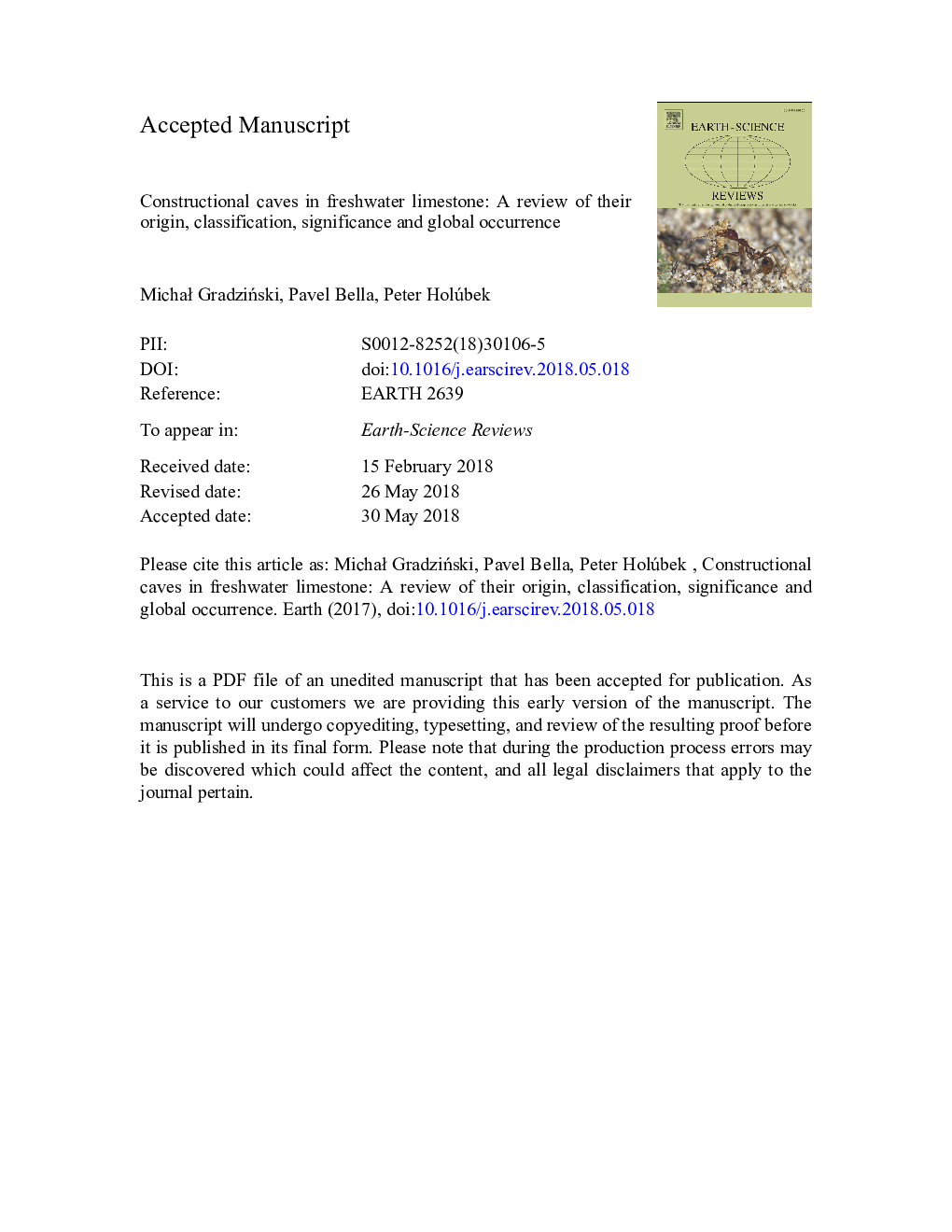| کد مقاله | کد نشریه | سال انتشار | مقاله انگلیسی | نسخه تمام متن |
|---|---|---|---|---|
| 8912878 | 1639918 | 2018 | 63 صفحه PDF | دانلود رایگان |
عنوان انگلیسی مقاله ISI
Constructional caves in freshwater limestone: A review of their origin, classification, significance and global occurrence
ترجمه فارسی عنوان
غارهای ساختمانی در سنگ آهک های شیرین: بررسی مبدا، طبقه بندی، اهمیت و رخداد جهانی
دانلود مقاله + سفارش ترجمه
دانلود مقاله ISI انگلیسی
رایگان برای ایرانیان
موضوعات مرتبط
مهندسی و علوم پایه
علوم زمین و سیارات
زمین شناسی
چکیده انگلیسی
Constructional caves in freshwater limestone appear to be the least described of the most commonly occurring types of cave. They are also known under the names “primary”, “syngenetic” or “framework” caves. Such caves develop in tufa and travertine during the growth of their host rock. Two main genetic categories of constructional caves have been recognized, described herein as progradational and aggradational. Progradational caves develop chiefly in tufa, less commonly in travertine, as the result of progradation occurring on a steep depositional surface. An empty void is often left between an older surface and a new carbonate mass growing outwards from it as a vertical or inclined curtain. The size and shape of a progradational cave depend on: (i) energy of water over the steep section, (ii) height of the steep section, (iii) shape of the depositional surface, (iv) water chemistry. The category of progradational caves includes also caves roofed by bridges of travertine or tufa. Progradational caves are richly decorated with speleothems like those seen in other limestone caves. The growth of the speleothems is facilitated by efficient percolation of water through the cave ceilings of carbonate with high effective porosity. Clastic sediments may accumulate in relict progradational caves, and often contain palaeontological, archaeological and palaeoanthropological finds. Aggradational caves may develop within freshwater carbonate (predominantly travertine) buildups at the outlets of artesian springs where the orifice lips constantly migrate upward. An active aggradational cave acts as a feeder channel for such a spring, so it is filled with water. The sizes and shapes of aggradational caves depend upon: (i) the nature of bedrock beneath travertine, (ii) local hydrological situation which controls the position of the piezometric surface, (iii) topography around the spring orifice, (iv) chemistry of water, and (v) evolution of the above conditions during the buildup growth. In addition to progradational and aggradational caves, tree-mould caves and cavities created by the subrosion of active carbonate buildups develop during their host carbonate growth. The majority of known constructional caves are of Quaternary, predominantly Holocene, age. This article is a review of constructional caves based on the available literature.
ناشر
Database: Elsevier - ScienceDirect (ساینس دایرکت)
Journal: Earth-Science Reviews - Volume 185, October 2018, Pages 179-201
Journal: Earth-Science Reviews - Volume 185, October 2018, Pages 179-201
نویسندگان
MichaÅ GradziÅski, Pavel Bella, Peter Holúbek,
